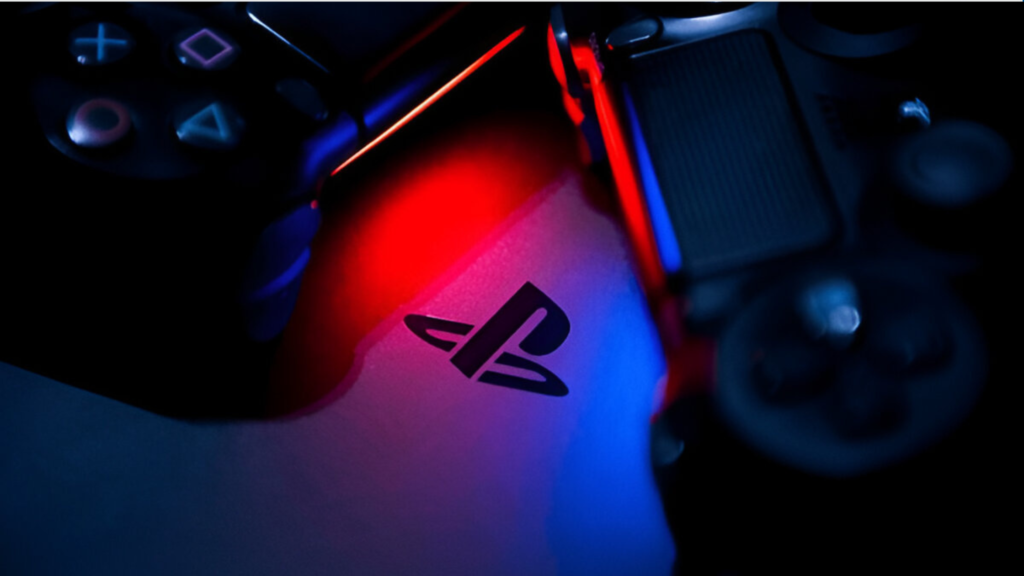
Before the evolution of PlayStation, the gaming industry was dominated by companies like Nintendo and Sega. These companies had a firm grip on the market, with games largely being played on cartridges. Sony entered the gaming market in the early 1990s, and its entry changed the course of gaming history forever. Learn more about PlayStation’s journey on the official PlayStation website.
With its innovative technology, enhanced gaming experiences, and extensive game library, PlayStation quickly became one of the most recognizable gaming brands in the world.
In this article, we will explore the history of PlayStation consoles, from their inception to the present day, covering each generation of consoles and the impact they have had on the industry.
Whether you’re a gaming enthusiast or just curious about the evolution of gaming consoles, this guide has everything you need to know.
| Console | Release Year | Processor | GPU | Units Sold |
|---|---|---|---|---|
| PlayStation 1 (PS1) | 1994 | 33.9 MHz MIPS R3000 | 1 MB VRAM | 102.49 million |
| PlayStation 2 (PS2) | 2000 | 294 MHz Emotion Engine | 147 MHz Graphics Synthesizer | 155 million |
| PlayStation 3 (PS3) | 2006 | 3.2 GHz Cell Broadband Engine | 550 MHz RSX Reality Synthesizer | 87.4 million |
| PlayStation 4 (PS4) | 2013 | 1.6 GHz 8-core AMD Jaguar | 1.84 TFLOPS AMD Radeon | 117.2 million |
| PlayStation 5 (PS5) | 2020 | 3.5 GHz 8-core AMD Zen 2 | 10.28 TFLOPS AMD Radeon RDNA 2 | 50+ million (as of 2023) |
Now, let’s explore each PlayStation generation in detail.
1. The Birth of PlayStation (1994-2000)
The origins of PlayStation (PS1) trace back to Sony’s failed collaboration with Nintendo. In the early 1990s, Sony worked with Nintendo to develop a CD-ROM add-on for the Super Nintendo Entertainment System (SNES).
However, after Nintendo unexpectedly backed out of the partnership and chose Philips instead, Sony decided to create its own gaming console.
In 1994, Sony launched the first PlayStation (PS1) in Japan, and it quickly expanded to other markets. The PlayStation introduced revolutionary 3D graphics, CD-based games, and an extensive third-party support system, which allowed developers to create better and more complex games.
The Most Popular PS1 Games
- Final Fantasy VII
- Metal Gear Solid
- Resident Evil
- Gran Turismo
Read in-depth reviews of these classics on IGN.
The PlayStation 1 sold over 100 million units worldwide, making it one of the most successful consoles of all time. Its influence on gaming was profound, shifting the industry toward disc-based media and pushing storytelling and graphics to new heights.
2. PlayStation 2 Era (2000-2006)
Following the massive success of the PS1, Sony launched the PlayStation 2 (PS2) in 2000. The PS2 improved upon its predecessor in every way, featuring better graphics, a faster processor, and an expanded game library. One of its biggest advantages was backward compatibility, allowing users to play PS1 games on the new console.
Another major innovation was the inclusion of a built-in DVD player, making the PS2 a multifunctional entertainment device. This feature significantly boosted sales, as it provided value beyond just gaming.
With an enormous game library of over 3,800 titles, the PS2 became the best-selling gaming console of all time, with more than 155 million units sold. For detailed sales statistics, check out Statista’s gaming industry reports.
The Most Iconic PS2 Games
- Grand Theft Auto: San Andreas
- God of War
- Shadow of the Colossus
- Final Fantasy X
Sony also introduced online gaming via the PlayStation Network adapter, setting the stage for future online multiplayer experiences.
3. The PlayStation 3 Revolution (2006-2013)
The PlayStation 3 (PS3) was released in 2006 and was Sony’s first console to introduce high-definition gaming. With its powerful Cell processor and Blu-ray technology, the PS3 provided better graphics and larger game storage capacity than ever before.
However, the PS3 faced early struggles due to its high price and the complexity of its architecture, which made game development more difficult. Despite these challenges, Sony improved its online gaming service with the PlayStation Network (PSN) and introduced PlayStation Plus, offering free monthly games and exclusive discounts.
Notable Exclusives
- The Last of Us
- Uncharted
- God of War III
- Metal Gear Solid 4
The PS3 recovered and established a loyal player base. The introduction of the PlayStation Move controller also showcased Sony’s interest in motion gaming, competing with the Nintendo Wii.
4. PlayStation 4: A New Era (2013-2020)
Sony launched the PlayStation 4 (PS4) in 2013 with a focus on performance, social gaming, and streaming. The PS4 featured an improved GPU, an easy-to-use interface, and seamless online connectivity. The introduction of Share Play and live streaming capabilities allowed players to connect with their friends and showcase their gameplay online.
One of the biggest innovations of the PS4 was PlayStation VR, which introduced virtual reality gaming to the PlayStation ecosystem. Explore more about PS VR on the official PlayStation VR page.
Exclusive Blockbusters
- Horizon Zero Dawn
- Bloodborne
- Marvel’s Spider-Man
- The Last of Us Part II
The PS4 became the second-best-selling console in history, with over 117 million units sold. Sony’s focus on exclusives, affordability, and online services gave it a competitive edge over Microsoft’s Xbox One.
5. PlayStation 5: The Future of Gaming (2020-Present)

In 2020, Sony launched the PlayStation 5 (PS5), boasting cutting-edge technology such as ray tracing, 4K gaming, and ultra-fast SSD storage for near-instant load times. The PS5 also introduced the DualSense controller, featuring advanced haptic feedback and adaptive triggers for an immersive gameplay experience.
PS5 Exclusives
- Demon’s Souls
- Ratchet & Clank: Rift Apart
- God of War: Ragnarok
The company also expanded its cloud gaming services through PlayStation Now, allowing players to access older PlayStation titles via streaming. Learn more about cloud gaming at TechRadar.
The PlayStation 5 quickly became one of the fastest-selling consoles in history, despite initial supply chain issues. As the industry moves toward digital gaming, Sony has also increased its investment in cloud gaming and digital storefronts, preparing for a future where physical discs may become obsolete.
6. The Future of PlayStation
Looking ahead, the gaming industry is expected to see significant advancements in virtual reality, artificial intelligence, and cloud gaming. The rumored PlayStation 6 (PS6) could push these boundaries further, offering even more immersive gaming experiences.
Sony is also investing heavily in PlayStation VR 2, which is expected to take virtual reality gaming to new heights. Cloud gaming services are likely to expand, making it easier for players to access high-quality games without the need for expensive hardware.
AI-driven gaming could also revolutionize the way games are developed and played, creating more dynamic and personalized experiences for gamers worldwide. Read more about the future of gaming on The Verge.
FAQ’s
1. Which PlayStation Console Sold the Most?
The PlayStation 2 (PS2) is the best-selling PlayStation console of all time, with over 155 million units sold worldwide. It remains the best-selling gaming console in history, thanks to its backward compatibility, built-in DVD player, and an extensive library of over 3,800 games.
2. What Was the First PlayStation Game Ever Released?
The first game ever released for the PlayStation 1 (PS1) was “Ridge Racer” in 1994. This racing game showcased the console’s 3D graphics and CD-based technology, setting the stage for future PlayStation titles.
3. When Will the PS6 Be Released?
As of now, Sony has not officially announced the PlayStation 6 (PS6). However, based on the typical 6-7 year console lifecycle, the PS6 could be released around 2027 or 2028. Rumors suggest it may feature advanced AI, cloud gaming integration, and next-gen VR capabilities.
Conclusion
From the PlayStation 1 (PS1) to the PlayStation 5 (PS5), Sony has consistently innovated and pushed the boundaries of gaming technology. Each generation has introduced groundbreaking features, exclusive games, and a thriving gaming community.
With continued innovation in hardware and software, PlayStation remains a dominant force in the gaming industry. The legacy of PlayStation has shaped modern gaming, and its future promises even more exciting developments, keeping players engaged for years to come.
- Learn more about PlayStation’s journey on the official PlayStation website.
- Read in-depth reviews of these classics on IGN.
Also Read

